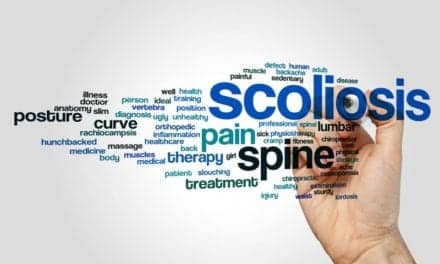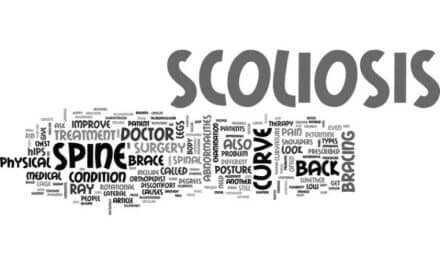With June being Scoliosis Awareness Month, the National Scoliosis Center is placing this year’s focus on what parents should expect if their child is diagnosed with scoliosis.
Diagnosis Stats
Among the estimated 9 million Americans who have been diagnosed with scoliosis, 80% of these cases are deemed idiopathic, meaning the cause of spinal curvature is unknown. The onset of scoliosis is typically between 10 and 15 years old, although the condition can develop in infancy or early childhood. Research suggests that 30% of patients have a family history of scoliosis, the National Scoliosis Foundation notes in a media release.
Treatments
The various treatment scenarios for children diagnosed with scoliosis include the following:
- Watch and Wait – Not all scoliosis spinal curvatures are created equal. If a child’s curvature is 20 degrees or less, then a “watch and wait” approach may be recommended. It is important to understand that “watch and wait” does not equal doing nothing at all. A clinician will closely monitor your child through X-rays and visits to determine if the curve progresses and further treatment is needed.
- Bracing and Physical Therapy – If the curvature is between 20 and 50 degrees, the “watch and wait” window may have closed. A rotational abnormality may develop, resulting in asymmetrical appearance, and there is an increased likelihood the curve will continue to increase. At this point, specialists will likely recommend bracing to halt or reduce curve progression. Patients might also consider scoliosis-specific physical therapy. When administered by a competent care team, this combination has proven to help over 90% of those patients that adhere to the treatment plan.
- Surgery – With higher curves specialists may recommend surgery as these curves tend to increase despite the use of bracing and physical therapy. If left untreated it can cause a more prominent asymmetrical appearance and increased rotation. These complications can impact lung capacity and lead to heart problems.
Increased Awareness is Important
Increased awareness of scoliosis among parents is important. This awareness includes understanding the importance of early detection and the availability of non-operative bracing treatments. Missing or ignoring the warning signs of scoliosis may have an adverse impact on a child.
“Early detection can mean the difference between a child wearing a brace versus a child needing spinal fusion surgery.”
— Luke Stikeleather, President and Founder of National Scoliosis Center
[Source(s): National Scoliosis Center, PR Newswire]
Related Content:
VNTC Develops Spinamic, a Hybrid Scoliosis Brace
Vertebral Body Tethering: a Promising Adolescent Scoliosis Treatment Option?
What Parents Should Know About Scoliosis





